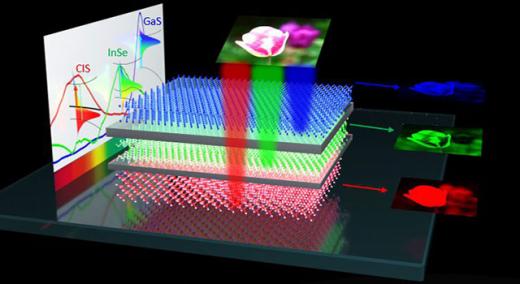Georgia State University researchers have successfully designed a new type of artificial vision device that incorporates a novel vertical stacking architecture and allows for greater depth of color recognition and scalability on a microlevel. The research is published in the journal ACS Nano.
|
ADVERTISEMENT |
“This work is the first step toward our final destination—to develop a microscale camera for microrobots,” says assistant professor of physics Sidong Lei, who led the research. “We illustrate the fundamental principle and feasibility to construct this new type of image sensor with an emphasis on miniaturization.”
Lei’s team was able to lay the groundwork for the biomimetic artificial vision device, which uses synthetic methods to mimic biochemical processes, using nanotechnology.
…

Add new comment